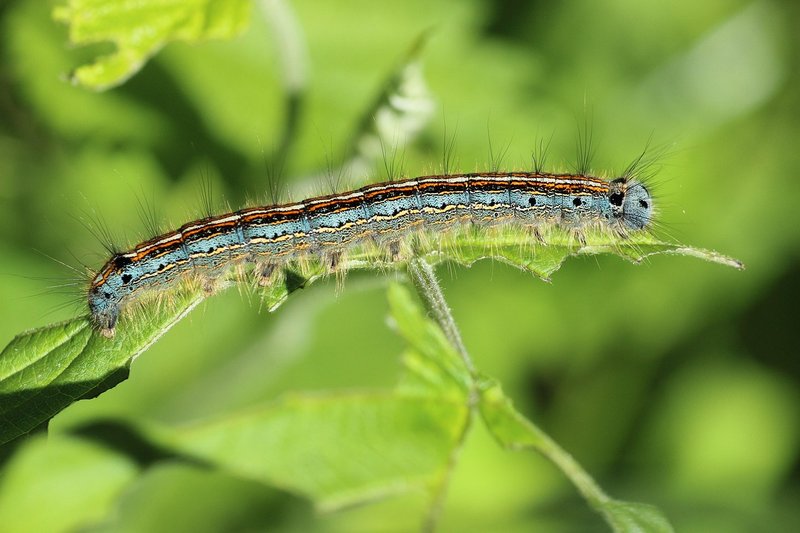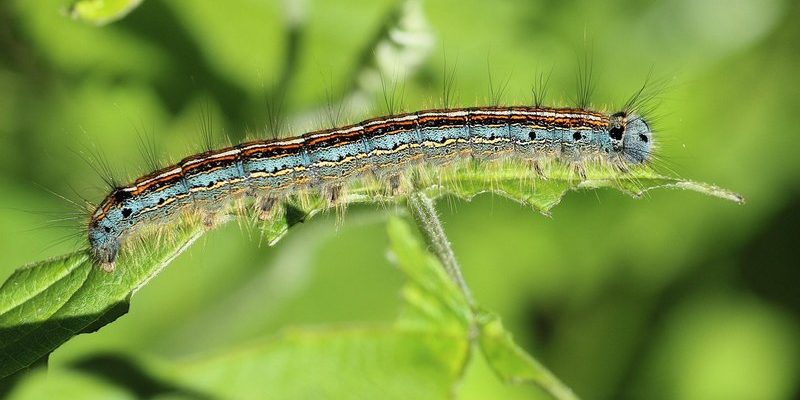
Have you ever looked closely at a caterpillar and wondered about this curious creature’s life? These fascinating little animals are not just a pretty sight in your garden; they play crucial roles in our ecosystems and are full of surprises. A caterpillar is the larval stage of butterflies and moths, and they come in a variety of shapes, colors, and sizes. Often overlooked, caterpillars are the real MVPs of the insect world, as they munch their way through leaves and flowers, contributing to their environment in ways we might not even realize.
Imagine a tiny, fuzzy creature inching along a branch, devouring leaves as if it’s at an all-you-can-eat buffet. That’s a caterpillar for you! Not only are they delightful to observe, but they also undergo one of nature’s most incredible transformations—metamorphosis. This process remains one of the most captivating wonders of the natural world. Let’s roll up our sleeves and dive into the many aspects of these charming larvae!
What Is a Caterpillar?
A caterpillar is the larval form of a butterfly or a moth. It is primarily known for its voracious appetite and unique body structure. Caterpillars have a soft, elongated body, often covered in hair or spines, which can serve as a defense mechanism. They come in countless species, each with its own distinct characteristics.
At first glance, a caterpillar might seem like just another bug, but they play vital roles in their ecosystems. They are herbivores, primarily feeding on leaves, and they can be found in various habitats, from gardens to forests. Some species even have specialized diets, targeting specific plants as their food source. This selectivity not only helps plant populations thrive but also contributes to biodiversity.
During their time as caterpillars, they undergo several growth stages, known as instars. Each instar is separated by a process called molting, where the caterpillar sheds its skin to accommodate its growing body. This growth phase prepares them for the next big step in their life cycle.
Caterpillar Life Cycle
The life cycle of a caterpillar is one of nature’s most incredible transformations. It begins with the egg stage. A female butterfly or moth will lay eggs on or near the host plants, ensuring there’s ample food for the hatching caterpillars. Once the eggs hatch, tiny caterpillars emerge, ready to start their journey.
Once they hatch, caterpillars immediately begin to eat, often feasting on the leaves of the host plant. They diligently consume as much as they can, growing quickly as they go through multiple molts. This is the larval stage, which can last anywhere from a few weeks to several months, depending on the species and environmental conditions.
After a series of instars, the caterpillar will seek out a suitable place to pupate. This is a critical moment, as the caterpillar transforms into a chrysalis or pupa. Inside this protective casing, the caterpillar does something remarkable—it reconfigures itself into a butterfly or moth. This metamorphosis can take several days to weeks, depending on the species and surrounding environment. When the time is right, the adult emerges, often surprising observers with its stunning beauty.
Interesting Facts About Caterpillars
| Size: | Typically 1 to 6 inches long |
| Habitat: | Gardens, forests, and grasslands |
| Diet: | Primarily leaves, with some specific plant preferences |
| Speed: | Slow; they crawl, averaging around 1 inch per second |
| Lifespan: | Usually 2 weeks to several months |
| Defense Mechanisms: | Camouflage, hair or spines, and some produce toxins |
Caterpillar Behavior
Caterpillars exhibit unique behaviors that aid in their survival. One of the most interesting aspects is their feeding habits. They often have specialized mouthparts designed for chewing, allowing them to consume large quantities of leaves quickly. This constant feeding is crucial, as they need the energy to grow and prepare for metamorphosis.
Many caterpillars have developed fascinating strategies to evade predators. For instance, some species mimic the appearance of twigs or leaves, effectively camouflaging themselves in their surroundings. Others possess bright colors and patterns that signal to potential predators that they might be toxic or unpalatable. This survival tactic helps ensure that they can grow without being constantly hunted.
Moreover, some caterpillars exhibit social behavior. Certain species will gather in groups for feeding, which may provide safety in numbers. These gatherings can also help them communicate and defend against threats. Such behaviors showcase that even these seemingly simple creatures have complex interactions with their environment.
Caterpillar Species Diversity
The world of caterpillars is incredibly diverse, with thousands of species exhibiting various traits. From the common cabbage white caterpillar to the strikingly beautiful caterpillar of the Swallowtail butterfly, each species has its unique characteristics. Some caterpillars sport vibrant colors and patterns that can be mesmerizing, while others are more muted and blend seamlessly into their surroundings.
Specific butterflies and moths have evolved distinct caterpillar forms that reflect their feeding habits and habitat. For example, the caterpillar of the Monarch butterfly is known for its striking black and yellow bands, which warn potential predators of its toxicity. In contrast, the Luna moth caterpillar is covered in soft, green spines, helping it camouflage among leaves.
Some caterpillars even engage in mimicry, imitating the appearance of other species that predators avoid. These adaptations are fascinating examples of evolution at work, showcasing how caterpillars have developed various mechanisms for survival and reproduction.
Environmental Importance of Caterpillars
Caterpillars play a significant role in maintaining the health of ecosystems. As herbivores, they help control plant populations by feeding on leaves. This grazing can promote plant diversity, allowing different species to thrive. By consuming certain types of plants, caterpillars prevent any one species from dominating an area, fostering a balanced ecosystem.
Additionally, caterpillars serve as a food source for many other creatures. Birds, mammals, and other insects rely on them as vital nourishment, making them key players in the food web. When caterpillars undergo metamorphosis, they become butterflies or moths, which in turn pollinate flowers, further contributing to the health of their environments. It’s a beautiful cycle of life that underscores their ecological importance.
Furthermore, caterpillars can act as indicators of environmental health. Some species are sensitive to pollution and habitat changes, so monitoring their populations can provide insights into overall ecosystem health. This makes them not just fascinating to observe, but also essential for conservation efforts.
Threats to Caterpillars
Despite their importance, caterpillars face numerous threats in the wild. Habitat loss is one of the most significant challenges, as urbanization and agricultural practices diminish their natural environments. With fewer plants available for food and shelter, caterpillar populations can decline rapidly.
Pesticides and other chemicals used in farming can also pose a dire threat. These substances can be toxic to caterpillars, leading to reductions in their populations. Even the health of the plants they depend on is affected, creating a ripple effect in the food web.
Climate change is another considerable challenge. As temperatures shift and extreme weather events become more common, caterpillars may struggle to adapt. Changes in climate can affect their food sources and survival rates, making it essential to monitor and mitigate these impacts for future generations of these remarkable creatures.
Caterpillar Conservation
Conserving caterpillar populations is essential for maintaining biodiversity and healthy ecosystems. One effective way to support caterpillars is by planting native host plants, which provide them with the necessary food sources. By creating a garden that welcomes caterpillars, you can enjoy watching their life cycle unfold while contributing to their survival.
Additionally, reducing pesticide usage can significantly improve caterpillar habitats. Opting for organic gardening practices not only helps caterpillars but also benefits other beneficial insects and pollinators. Creating awareness about their ecological roles can encourage more people to take steps to protect these fascinating creatures.
Lastly, supporting local conservation efforts and biodiversity initiatives can make a big difference. Many organizations focus on preserving habitats and educating the public about the importance of caterpillars and other insects. By getting involved, you can help ensure that these important insects continue to thrive for years to come.
FAQ
What do caterpillars eat?
Caterpillars primarily feed on leaves, specifically from host plants that are suitable for their species. Each caterpillar has its preferences, with some selecting specific plants to munch on while others will happily chow down on a wider variety. This selective eating is essential for their growth and development, as they need the right nutrients to prepare for metamorphosis.
How long does the caterpillar stage last?
The caterpillar stage can vary greatly among species. Generally, this phase lasts anywhere from a couple of weeks to several months. Factors such as environmental conditions, food availability, and species type play a significant role in determining the length of this stage. During this time, caterpillars undergo multiple molts, growing larger until they reach a suitable size for pupation.
Are all caterpillars harmful to plants?
While many caterpillars consume leaves and may damage plants, not all are harmful. Some species have evolved alongside certain plants and are part of a balanced ecosystem. However, there are invasive caterpillar species that can cause significant harm to crops and gardens. Understanding the specific caterpillar species in your area can help you determine if they are beneficial or detrimental to your plants.
How can I attract caterpillars to my yard?
To attract caterpillars to your yard, start by planting native host plants that caterpillars prefer. These plants provide a food source for them during their larval stage. Additionally, create a diverse garden that includes flowers for adult butterflies and moths, as they will visit the same areas to lay their eggs. Avoid using pesticides to ensure a safe environment for caterpillars to thrive.
What is the most interesting caterpillar species?
There are many fascinating caterpillar species to choose from, but one standout is the Lonomia obliqua. This caterpillar is known for its striking appearance and potential dangers. While its bright colors may draw you in, it’s essential to be cautious, as this caterpillar can cause severe reactions if handled. Its story serves as a reminder of the beauty and complexity of the caterpillar world.
Can caterpillars be pets?
Yes, some people choose to keep caterpillars as pets, providing them with a suitable habitat and appropriate food. However, it’s essential to research the specific species and their requirements. Keeping caterpillars can be a rewarding experience, especially as you witness their transformation into butterflies or moths. Just be prepared for the commitment, as some species can take a while to complete their life cycle!
Why do caterpillars molt?
Caterpillars molt to accommodate their growing bodies. As they consume large quantities of food, they outgrow their skin, which is relatively soft. Molting allows them to shed the old, restrictive skin and emerge larger and ready to continue their growth journey. This process is crucial for their development and preparation for the next stage of their life cycle.
Do all caterpillars become butterflies?
No, not all caterpillars become butterflies. Some caterpillars will eventually transform into moths instead. Both butterflies and moths go through the same metamorphic stages, but the final form they take depends on their species. Understanding the differences between butterflies and moths can enhance your appreciation for these remarkable creatures!
Are caterpillars poisonous?
While not all caterpillars are poisonous, some species possess toxins that can be harmful if ingested or handled. Brightly colored caterpillars often indicate potential toxicity, serving as a warning to predators. If you’re unsure about a specific caterpillar, it’s best to admire it from a distance rather than touching it, as reactions can vary from mild irritation to severe allergic responses.
How do caterpillars benefit the ecosystem?
Caterpillars play crucial roles in their ecosystems. As herbivores, they help control plant populations and promote biodiversity. Additionally, they serve as a food source for various predators, contributing to the complex food web. When they metamorphose into butterflies or moths, they also become pollinators, further enhancing their positive impact on the environment.

